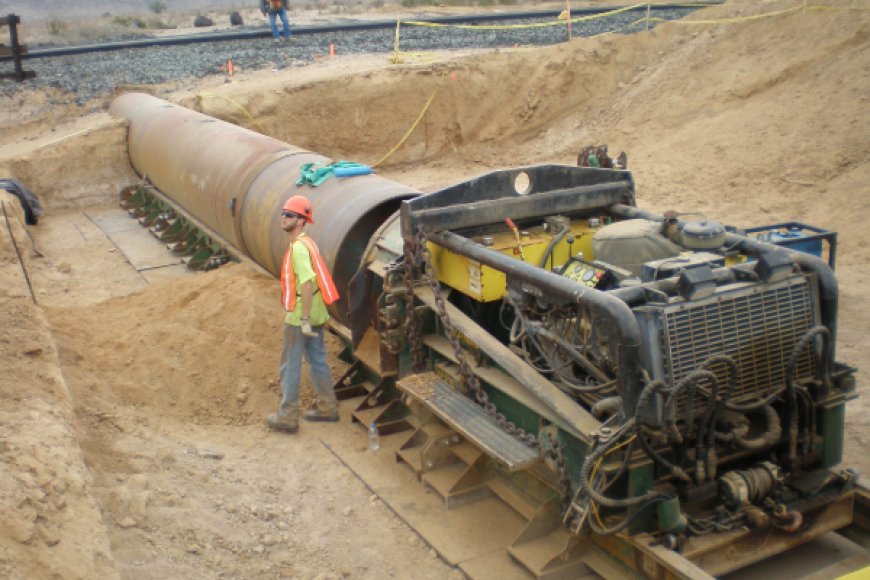Key Factors to Consider When Choosing Auger Boring for Your Next Project

When it comes to underground utility installation, construction, or infrastructure development, choosing the right method is crucial for success. One of the most reliable trenchless techniques used in these types of projects is auger boring. This method, which uses a rotating auger to create a borehole, is especially effective for installing pipes and conduits under roads, railways, and other structures where traditional trenching would be too disruptive or impractical.
However, as with any construction technique, selecting auger boring for a project isn’t always straightforward. It involves careful consideration of various factors to ensure it’s the most suitable method for the job. This article explores the key factors to keep in mind when choosing auger boring for your next utility installation or underground project.
1. Soil and Ground Conditions
The first factor to consider when deciding whether auger boring is the right choice is the type of soil or ground conditions in which you will be working. Auger boring is most effective in soils that are relatively cohesive, such as clay, silt, or soft shale. These materials allow the auger to efficiently remove soil and create the necessary borehole without much resistance.
However, in extremely rocky, dense, or gravel-filled soils, auger boring can be less efficient. In such conditions, other techniques like pneumatic piercing tools, horizontal directional drilling (HDD), or even a full-sized drill rig may be more appropriate. A thorough soil analysis or geotechnical survey should be conducted to understand the specific ground conditions. This information will help you determine if auger boring can perform as expected or if an alternative method should be considered.
2. Project Size and Depth Requirements
The scope of the project and the required depth of the borehole are also critical considerations. Auger boring is ideal for relatively short-distance, shallow installations, typically under 100 feet. It works well for pipe diameters ranging from small to medium sizes, making it perfect for installing water pipes, electrical conduits, or smaller utility lines.
However, for longer distances or deeper installations, auger boring may face limitations. It’s also important to note that auger boring is typically suited for horizontal installations, which means it may not be the best choice for projects that require vertical drilling or more complex geometries. If the project involves deeper or longer bores, other trenchless methods such as horizontal directional drilling (HDD) or microtunneling may offer more flexibility and efficiency.
3. Cost-Effectiveness and Budget
Cost is always a key factor in any construction project. Auger boring can be an extremely cost-effective solution, particularly for smaller to medium-sized utility installations. It requires less expensive equipment than some alternative methods like HDD or microtunneling and typically involves fewer operational costs as well. The absence of a large crew or extensive site preparation often leads to reduced project costs, especially when working in urban environments where space and access are limited.
However, it’s important to factor in all associated costs, including site preparation, disposal of excavated materials, and labor. While auger boring is often less expensive than other trenchless methods, it may not always be the most economical choice if your project requires specialized equipment or has unique challenges that demand more complex drilling techniques. Performing a thorough cost-benefit analysis will help determine if auger boring fits within your project’s budget.
4. Time Constraints and Project Timeline
Time is often one of the most important factors to consider in any construction or utility installation project. Auger boring is a relatively quick method, especially for short-distance installations. Since it doesn’t require extensive excavation or surface disruption, projects using auger boring can be completed in a shorter timeframe compared to traditional trenching methods.
However, the timeline can be affected by various factors, such as soil conditions, borehole length, and the need for precise alignment. In cases where the project demands faster execution, auger boring is often preferred due to its speed and efficiency. On the other hand, if the project is more complex and involves longer bores or deeper trenchless installations, methods like HDD might offer faster solutions. Therefore, it is important to assess your project timeline and consider whether auger boring can meet your scheduling needs.
5. Environmental Impact and Surface Disruption
One of the key benefits of auger boring, like other trenchless methods, is its minimal surface disruption. Traditional excavation can create significant disturbances to roadways, landscapes, and ecosystems. With auger boring, the need for digging a trench is eliminated, which helps preserve the surface above the borehole and limits environmental impact.
This makes auger boring an ideal choice for projects in environmentally sensitive areas, busy urban locations, or areas with heavy traffic. For instance, auger boring is often used under roads, railways, and water bodies, where surface disruption would be highly disruptive or costly. If maintaining the integrity of the surface and minimizing disruption is a priority for your project, auger boring could be a great choice.
6. Pipe Size and Type
The size and material of the pipes or utilities being installed are essential factors to consider when choosing auger boring. This method is most commonly used for installing smaller to medium-sized pipes, typically ranging from 4 to 24 inches in diameter. If your project involves larger pipe diameters or needs the installation of conduits made of unusual or heavy materials, such as large steel pipes, auger boring may not be the best choice.
Auger boring is most effective for pipes made of materials such as PVC, HDPE, or steel. It’s also well-suited for installing cable conduits and smaller pipeline systems for telecommunications, water, and gas. For larger installations, methods like HDD, which are capable of handling larger boreholes and a wider variety of materials, might be a better option.
7. Equipment and Crew Expertise
The final factor to consider is the availability of the necessary equipment and experienced operators. Auger boring requires specialized equipment, including auger drills, reamers, and support machinery. The equipment must be suited to the specific conditions of the project, including borehole size, soil type, and depth. Ensuring you have access to the right tools and machinery is crucial to the success of the project.
Moreover, skilled operators are essential to the smooth execution of auger boring. The process requires knowledge of the equipment, the ability to read soil conditions, and an understanding of how to maintain efficient operations to prevent problems like soil collapse or equipment malfunctions. A trained crew with experience in auger boring can greatly influence the outcome of the project.
Conclusion
Choosing auger boring for your next utility installation project offers numerous benefits, including cost-effectiveness, reduced surface disruption, and quicker project completion times. However, successful implementation of auger boring requires careful consideration of factors such as soil conditions, project size, pipe type, cost, timeline, and the experience of the equipment operators. By assessing these factors thoroughly, you can determine whether auger boring is the best solution for your project or if another method might be more suitable.
































































































































![Are AI Chatbots Replacing Search Engines? AI vs Google [New Research]](https://www.orbitmedia.com/wp-content/uploads/2025/05/How-often-are-we-using-AI-chatbots_.webp)



































